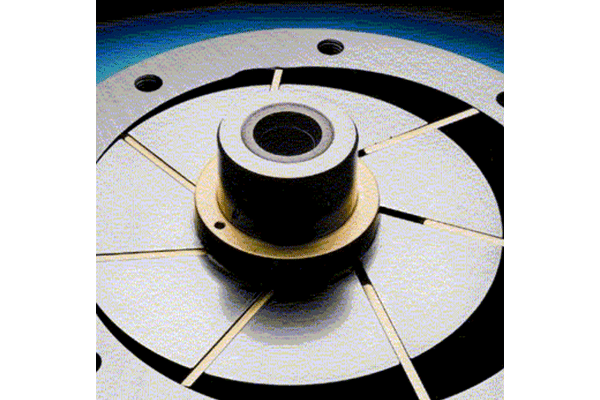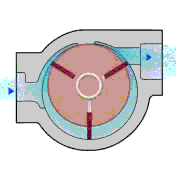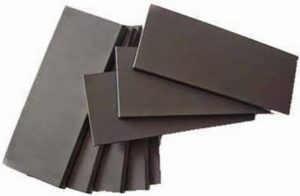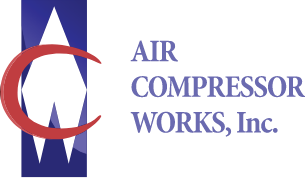Air Compressor Works
Post
Compressor Basics: Rotary Vane
October 20, 2017

Rotary vane compressors have been around for a long time and are used for many things other than just compressed air. The first known description of a sliding vane pump was in a book by an Italian engineer, Agostino Ramelli, written in 1588. The rotary vane pump was patented in 1876 by Charles C. Barnes, a Canadian engineer, and he is generally credited with inventing the modern design.
They’ve been produced since the early 1900’s, and have been used ever since. It would take a book to list every application rotary vane pumps are used for (in fact, there is a book). They are very popular in automotive and hydraulic applications. The power steering in your car probably uses a rotary vane pump. In the compressed air and vacuum world, they are still common, but they are not a popular as they used to be.
Here is how they compress air:

You have a cylindrical rotor inside of a housing, and this rotor has slots where the vanes are. The vanes can slide in and out.
The rotor is set eccentrically (off-center) in the housing so that on one side it almost touches. As the rotor spins, the vanes are thrown out by centrifugal force, until they touch the housing. If the pump is oil-lubricated, there will be a thin film of oil in between the vane and housing.
As air enters through the inlet, it’s trapped between the vanes. As the rotor turns, the volume of the trapped air is gradually reduced.
Again, the reduction in volume raises the pressure.
The vanes are often small pieces of carbon fiber or graphite composite, but they may be made of different materials, depending on the application.

From a maintenance standpoint, with an oil-lubricated pump you’ll replace oil, separators and maybe an oil filter on a regular basis. With a non-lubricated pump, you’ll replace the vanes as maintenance. It’s more expensive to replace the vanes, but you replace them a lot less often than changing the oil and filters on a lubricated pump.
Your duty cycle will determine which is more cost effective in the long run.
Rotary vanes are an older technology that is still common in compressed air and vacuum. However, there are now other technologies that are more efficient.
In higher pressure applications (above 80 psi), a rotary screw compressor can usually do the same thing more efficiently. The initial cost is usually very close on both and the maintenance is approximately the same, so in most cases, you should opt for a rotary screw.
In the lower pressure and vacuum applications, a claw can usually do the same thing more efficiently. However, at this time the claw pumps are much more expensive than the vane pumps. You have to make the calculations if the energy savings and lower maintenance of the claw pump has the return on investment you are looking for.
So if you are looking to buy a rotary vane pump for compressed air or vacuum, contact your local compressed air expert. Maybe there are better alternatives. Remember to look past the initial cost of the equipment.Just comparing the price of two pieces of equipment that you might buy is extremely short-sighted and will end up costing you more money. You need to compare total cost of ownership, including maintenance and energy costs.
Don’t get me wrong – vane pumps have their uses and sometimes they are the exact product that is right for the job. Their role in the automotive world and hydraulics is solidly entrenched. However, as newer, more efficient technologies emerge, their role in compressed air and vacuum is rapidly diminishing.
Contact Us
Contact Us
Palm beach:
1956 W 9th St
Riviera Beach, FL 33404
Monday – Friday 7:30 AM - 4:30 PM
Map and Directions
Miami:
7292 NW 25th St
Doral, FL 33122
Monday – Friday 7:30 AM - 4:30 PM
Map and Directions
Phone Number:
Areas We Serve
- Miami
- Fort Lauderdale
- Hollywood
- Boca Raton
- Stuart
- Vero Beach
- Delray Beach
- West Palm Beach
- Homestead
- Key West
- Fort Pierce





